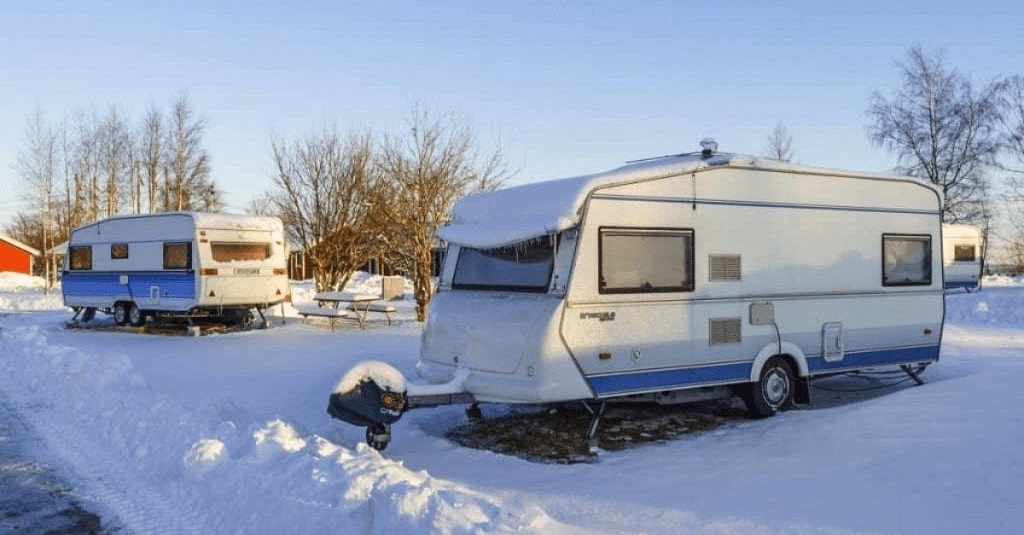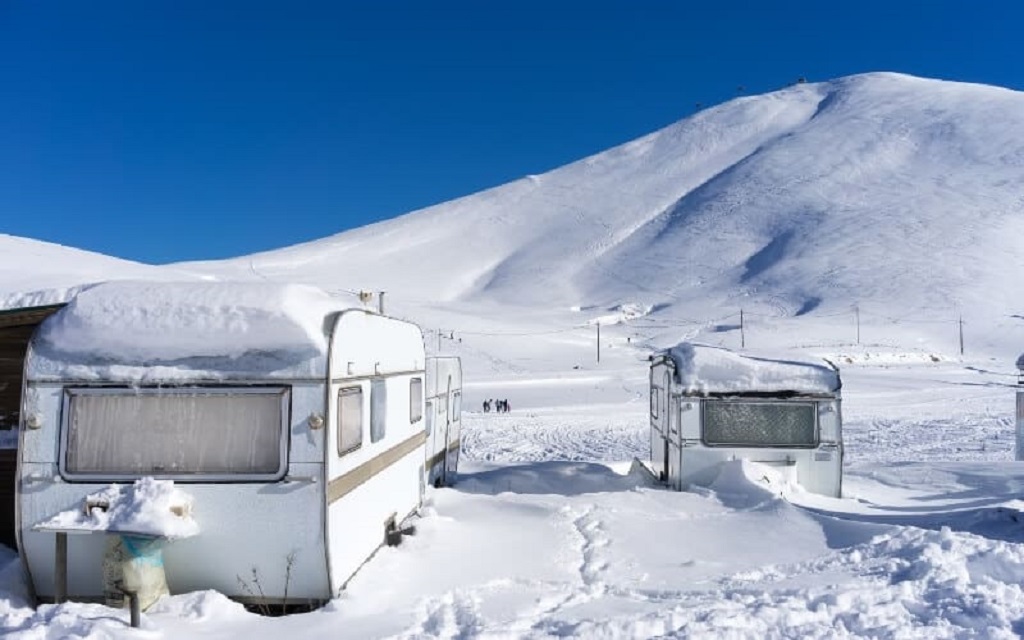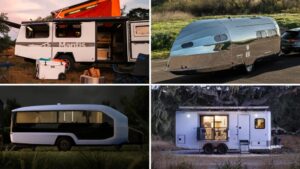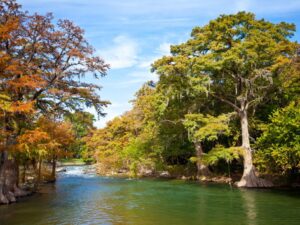How to Keep RV Pipes From Freezing While Camping?
Summer camping in your RV can be a blast. The warm weather and long sunny days make it perfect for spending time outdoors enjoying nature. However, even when it’s warm outside, your RV pipes can still freeze overnight or on cold days. Frozen pipes can cause major plumbing problems and damage your RV’s water system. Luckily, there are steps on how to keep RV pipes from freezing while camping you can take to prevent freezing and ensure your water flows freely all summer long.
Why RV Pipes Freeze in Summer

Freezing temperatures aren’t required for RV pipes to freeze. On summer nights and cold days, temperatures can still drop low enough for freezing to occur. Here are some key reasons why:
Ambient Temperatures Drop
While summer days are hot, temperatures plummet at night and on cloudy days. In many parts of the country, overnight lows can dip into the 40s or 50s, cold enough to freeze water. Early mornings and nights are when freezing typically occurs.
Cold Air Gets Inside Underbelly
Your RV’s underbelly is vulnerable to the elements. Cold night air can enter and surround pipework. Uninsulated underbellies have little protection, allowing exterior temperatures to impact pipes do you know camping sites .
Lack of Heat Circulation
Without proper heat circulation inside your RV, the interior temperature can mirror the outside. Cold spots develop, especially around drafty windows and doors. Areas like basements and storage bays also stay colder. Pipes in these locations are prime candidates for freezing.
Higher Elevation Campsites
Higher-elevation campgrounds are colder than lower elevations. What may be a mild 60 degrees at sea level can feel like 50 degrees at 5,000 feet. The thinner atmosphere provides less insulation.
No Backup Heat Source
Most RVs rely solely on furnace heat. If your furnace fails or you don’t run it 24/7, interior temps can dip low at night when you’re asleep. Pipes have no heat source to keep them thawed.
By understanding why and when freezing happens, you can take the right precautions.
How to Prevent External RV Pipe Freezing
External freshwater and sewer pipes under your RV are the most vulnerable to freezing. Here are some tips to keep them protected:
Insulate the Underbelly
Installing an aftermarket underbelly cover is the best protection. These covers encase the undercarriage in insulated panels, blocking cold air. Reflective tech bounces heat back inward. This keeps your tanks and pipes warmer.
Use Heat Pads
Adhesive heat pads can be applied directly to external pipes. They provide direct warmth to keep small sections from freezing. Use self-regulating pads to prevent overheating hazards. Don’t keep pads powered continuously – use only when temps drop.
Heat Tape Key Areas
Water supply lines, drain valves, and tank outlets are prime spots for heat tape. When powered on, they maintain 55+ degrees to prevent freezing. Use UL-rated, exterior-grade tape. Install per manufacturer instructions to avoid fire risks.
Foam Pipe Insulation
For inexpensive protection, wrap external pipes in foam insulation. Closed-cell pipe insulation works best. Make sure to cover valves, connectors, and elbow joints completely. Use waterproof tape to seal seams.
Drain Lines When Not in Use
There’s no risk of freezing if there’s no water in the pipes! In very cold weather, drain external lines and tanks when camping. Leave drain valves open while parked to prevent any refilling. Use compressed air to fully blow out pipes before storage.
Add Extra Heat When Needed
On extra cold nights, adding supplemental heat can keep things from freezing:
- Use a portable space heater near the underbelly.
- Aim furnace vents under cabinets to circulate warm air near pipes.
- Turn on the water heater to add heat to the supply lines.
With some preparation, you can keep the underside of your RV freeze-free even when it’s chilly out.
Tips for Preventing Interior Pipe Freezing

Freezing typically occurs on external pipes, but interior runs can also be at risk in cold zones. Here are some tips for keeping indoor pipes safe:
Maintain Heat at Night
Keep your RV’s interior temperature comfortable at night. Set the furnace to maintain at least 60 degrees when parked. Some RV antifreeze products require temperatures of 65+ degrees to be effective.
Let Faucets Drip
Dripping faucets is an easy way to avoid freeze-ups inside your RV. The small flow of water prevents freezing and keeps lines from bursting. If you have exterior handles, open cabinet doors so warm air can circulate plumbing.
Insulate Vulnerable Areas
Check for pipes running through unheated areas like basements or near sliding doors. Seal any openings allowing cold air contact. Use foam pipe insulation and heat tape to protect problem spots proactively.
Use Heat When Not Occupied
Anytime your RV will be unoccupied for 8+ hours in cold weather, leave the furnace running. Maintaining 60+ degrees will keep interior pipes safe. Consider a thermostat override switch to keep the heat on.
Install Heat Pads Under Sinks
Mounting electric heat pads beneath sinks can prevent freezing in base cabinets. Use wireless pads to avoid drilling holes. Adhere to the cabinet wall near supply lines for targeted warmth.
Let Taps Drip, Especially Overnight
Again, dripping faucets are effective freeze prevention. The small flow keeps water moving through pipes all night long. Open doors under sinks to allow warm air circulation. Dripping may waste some water, but it can save pipes!
Keep Cabinets Open
Leaving the sink, shower, and vanity cabinets open allows interior air to warm the plumbing. Cold air gets trapped inside when closed up. Allow the heat to naturally rise and penetrate storage areas.
Use a Dehumidifier
Reducing indoor moisture makes pipes less likely to burst if they do freeze. A dehumidifier pulls moisture from the air and lowers condensation that can freeze on pipes. Bonus – it reduces musty RV odors!
Using Space Heaters and Heat Lamps
Portable space heaters and heat lamps can provide supplemental heat to thaw frozen pipes or prevent freezing. Follow these guidelines to safely incorporate them into your RV:
Choose Ceramic Fan-Forced Models
Ceramic heaters with internal fans circulate air best. Models with adjustable thermostats allow setting an ideal temperature. Choose a size that adequately heats 150+ square feet.
Install Wall-Mounted Heat Lamps
Inexpensive clip-on heat lamps direct warmth right at pipes. Mount them inside cabinets using secure hardware. Make sure bulbs are far enough from materials to prevent fire. RED heat bulbs are ideal for RVs.
Use Quality Extension Cords
Use heavy 12 or 14-gauge grounded extension cords for space heaters. Never exceed the rated wattage. Place cords to avoid tripping and heat damage. Don’t run cords through doorways where they can be pinched.
Limit Heater Run Time
Don’t let portable heaters run overnight unattended. Use smart plugs to turn off automatically after several hours. Continuous heating draws a lot of power and risks overheating if left on too long.
Keep Away From Flammables
Make sure space is clear around heaters to prevent fire. Don’t place it near drapes, blankets, clothing, or under cabinets. Mount heat lamps securely so they can’t be knocked loose onto flammables.
Prevent CO Poisoning
Never use propane or kerosene space heaters in RVs! Only use electric models to avoid deadly carbon monoxide. Ensure your CO alarm is working properly. Crack windows for ventilation.
Check Condition Frequently
Inspect extension cords and heaters for damage before each use. Make sure they are operating properly and not overheating. Never leave portable heaters running unattended.
Space heaters are useful for a quick thaw or adding heat in cold zones. Use safe practices to prevent fires or carbon monoxide poisoning. Monitor them continuously for safety.
Winterizing Your RV Water System
When camping in very cold temperatures, fully winterizing your RV’s plumbing system is the best way to prevent freezing damage. Here is how to winterize like the pros:
Flush Out Tank Residue
Start by flushing your freshwater system with sanitizing bleach or vinegar, then draining thoroughly. This clears out any built-up sediment and residues. Remove any in-line water filters as well.
Drain and Bypass the Hot Water Tank
Turn off the water heater breaker and fully drain the tank. Disconnect inlet and outlet connections. Attach the water heater bypass kit to loop the supply lines, bypassing the tank.
Drain Pipes and Tanks
Open all faucets and showerheads and let them flow until empty. Flush the toilet as well. Open the freshwater tank drain and low-point drains to empty all supply lines. Allow everything to fully gravity drain.
Use Compressed Air
Attach an air compressor nozzle to the city water inlet. Set it to no more than 30 PSI and blow out all the lines. This forces out any remaining water so there is no standing water left to freeze.
Add RV Antifreeze
Pour non-toxic RV antifreeze into all drains and toilets. Also, pour it into the freshwater inlet using a hose. Antifreeze should flow from all faucets and fixtures when properly added. Fill P-traps and tanks.
Remove Drain Plugs
Leave all tank drain valves open while camped in freezing temps. Consider removing exterior drain outlet caps as well so tanks can fully gravity drain. Any remaining water could freeze and damage valves.
Insulate Tank Wells
Cover and insulate any exposed holding tank wells underneath your RV. Use rigid foam insulation panels sealed with waterproof tape to protect these vulnerable spots from freezing.
Winterize Appliances
Winterize the ice maker, drinking water filter, washing machine, wet bath, and any other appliances with water connections per manufacturer recommendations.
Maintain Circulation
After winterizing, start your water pump periodically and run a little antifreeze through the lines to maintain proper circulation. Also, run the generator to keep the underbelly heat pads operational.
Take these proactive winterization steps before camping in sub-freezing conditions, and your RV water system will stay protected from freeze damage all season long.
5 Key Tips for Preventing Frozen Pipes
Here are 5 quick tips to recap how to keep your RV pipes freeze-free:
- Insulate vulnerable exterior pipes and tanks. Heat pads, tape, and foam insulation are ideal.
- Maintain interior heat at a minimum of 60 degrees whenever parked overnight.
- Let taps drip overnight, especially along exterior walls. Open cabinets so warm air can circulate.
- If camping in extreme cold, fully winterize the water system with RV antifreeze.
- Use safe space heaters to add supplemental heat to uninsulated areas prone to freezing.
Frequently Asked Questions
What temperature do RV pipes freeze at?
RV pipes will typically freeze when interior temperatures reach 20-30 degrees Fahrenheit. Exterior pipes can freeze at even warmer temps down to freezing at 32 degrees. Slow flows and cold spots make pipes vulnerable even at 40 degrees outside.
Why do my RV pipes freeze when it’s warm outside?
Even warm summer temps can drop cold overnight and allow freezing, especially in unheated areas. The underbelly is prone to freezing if left unprotected and unheated. Letting the tap drip prevents freezing even on mild nights.
How can I re-winterize my RV if needed?
Simply repeat the steps – flush the system, drain tanks, and pipes, blow out remaining water with compressed air, and add fresh RV antifreeze through all lines and fixtures again. This re-winterizes things fully.
Will RV antifreeze alone prevent freezing?
Antifreeze can help but works best when combined with heat. Allowing interior temps to drop below 60 degrees F minimizes its effectiveness. Antifreeze just lowers the freezing point – additional heat is still needed.
Are space heaters safe to use in an RV?
Used properly, electric space heaters are safe supplemental heat sources. Never use propane/kerosene models in RVs. Use proper extension cords and leave heaters running unattended. Check frequently to prevent overheating. Position safely away from flammables.
Conclusion
Freezing pipes can certainly create headaches and plumbing issues while RV camping, even during warmer months. By understanding why pipes freeze and taking proactive preventative steps, you can keep your RV’s Learn and explore Things To Do In Catalina Island flowing and prevent costly freeze damage all camping season. Using a combination of insulation, heat sources, dripping faucets, and winterization allows stress-free camping regardless of cooler overnight temperatures. Be ready to take action at the first sign of freezing temperatures, and you can avoid frozen pipes ruining your summer RVing adventures.




